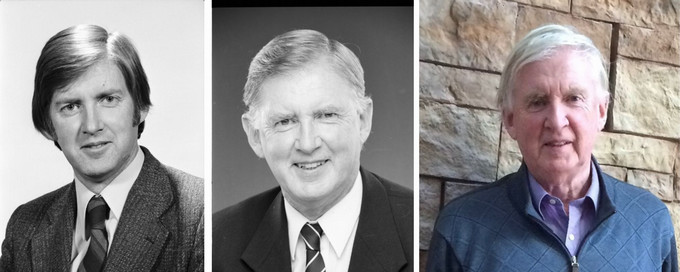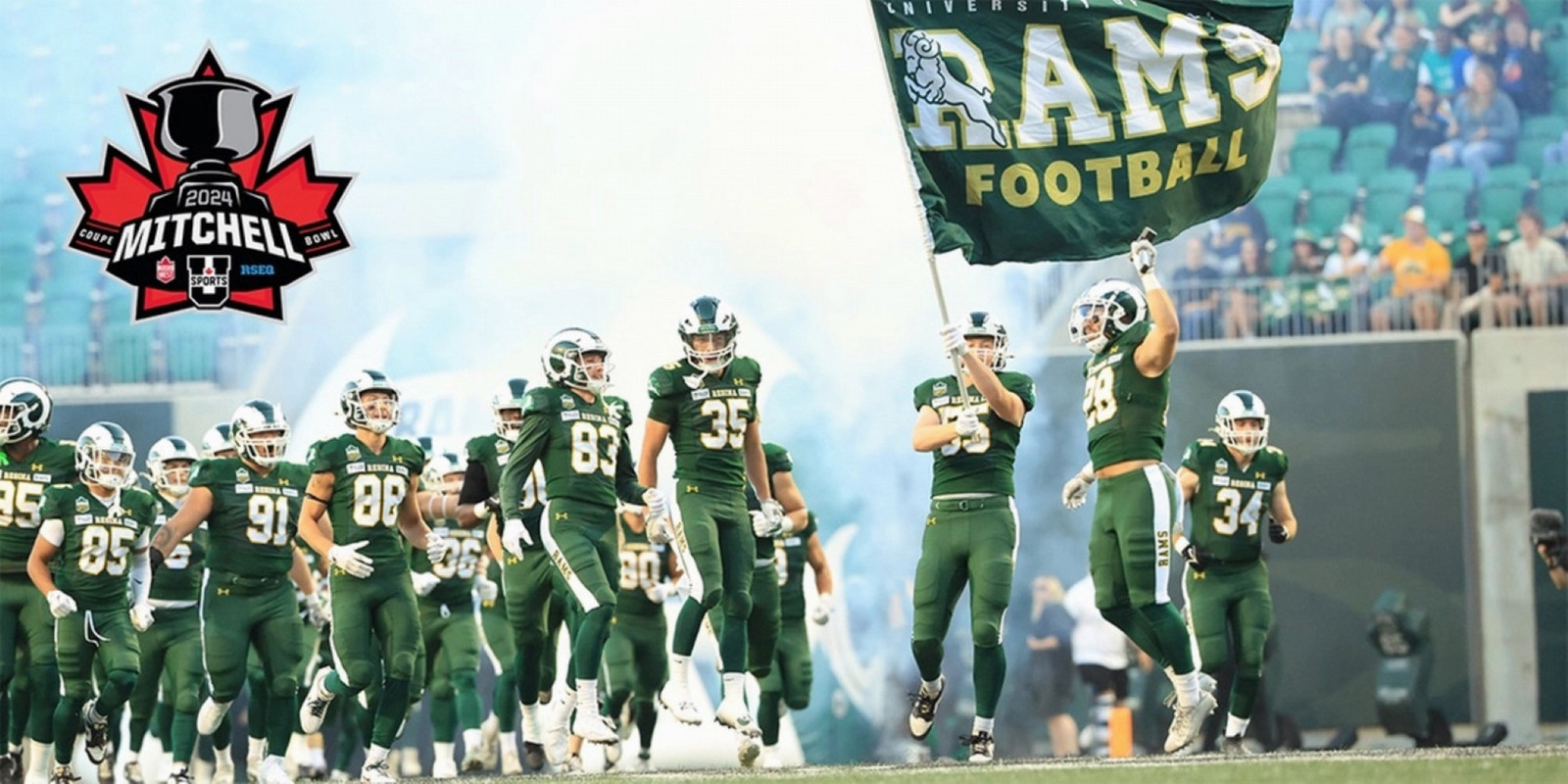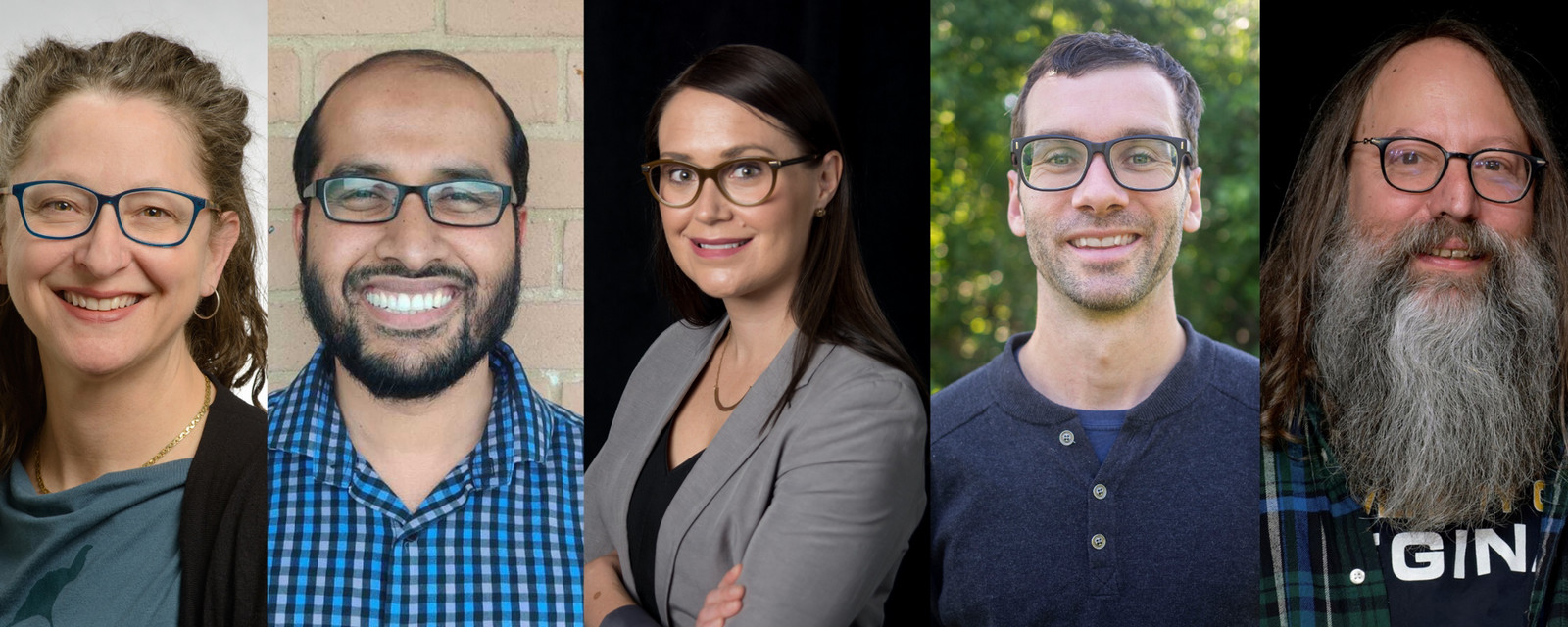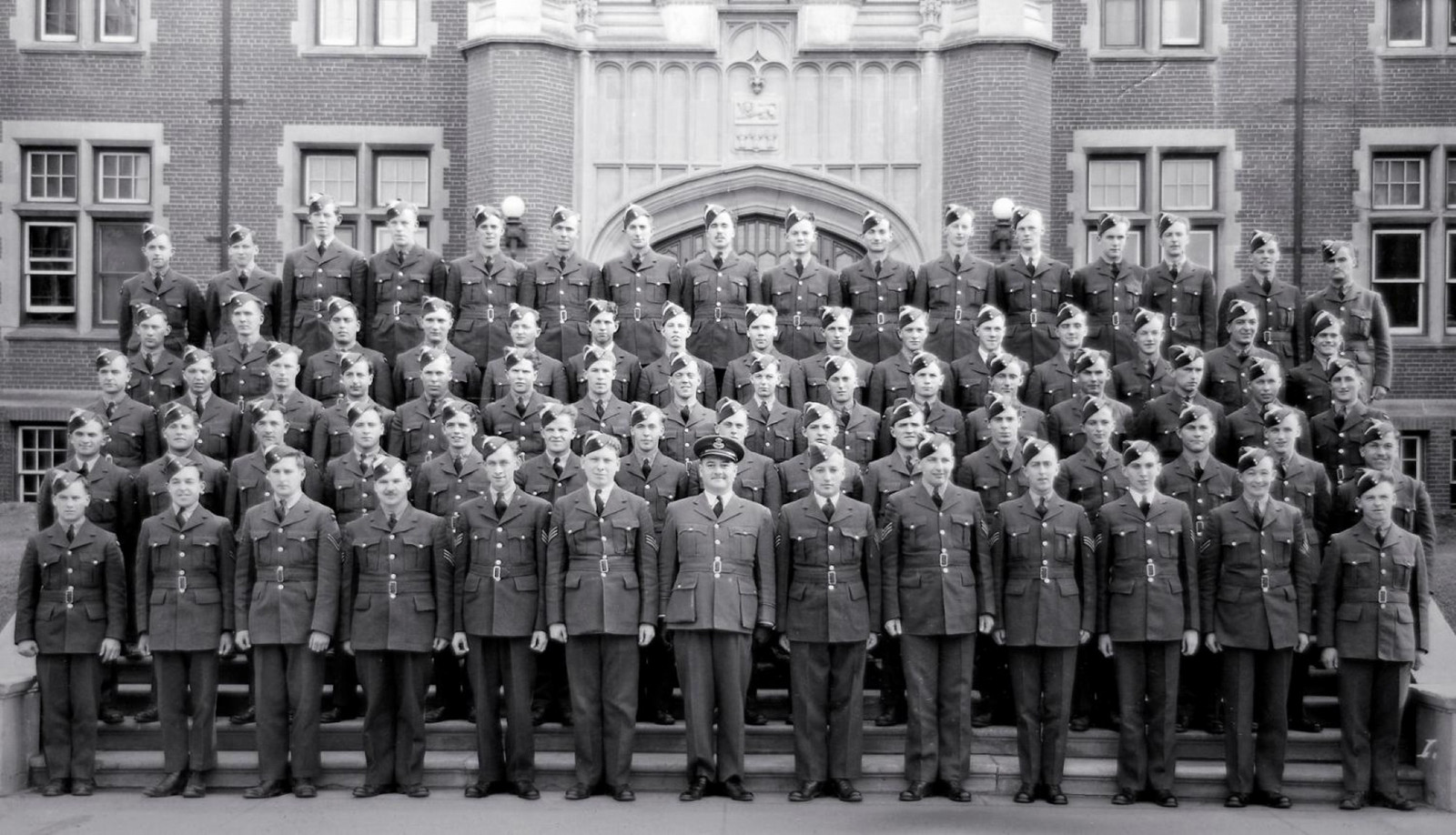Dr. Reid Robinson came to the University of Saskatchewan, Regina Campus, in 1965 as an Assistant Professor of Chemistry. He was here in 1974 to witness the Regina Campus officially become the University of Regina, and his impressive career kept him busy at the U of R up until his retirement in 2001.
Addendum: Shortly after the posting of this story, Dr. Robinson’s wife Annabel, Professor Emerita of Classics at the University of Regina, shared that he had passed. Dr. Robinson’s obituary may be found here. In memory of Dr. Robinson, the flag on the U of R campus will be flown at half-mast on Monday, January 27, 2025.
In Saskatchewan, as we came across the border, it started snowing. This was right at the beginning of September. And I thought, ‘oh my gosh, where am I coming to?’ — Dr. Reid Robinson, University of Regina faculty and staff member from 1965 to 2001
Dr. Robinson held many positions throughout his 36-year career at the U of R, from Dean of Arts and Science to Executive Assistant to the Principal to Associate Vice-President (Academic). During the U of R’s 50th Anniversary Alumni Week, we jumped at the opportunity to talk with Dr. Robinson about what brought him to the Regina Campus, what it was like when the University of Regina officially becoming an independent, degree-granting institution, and how the campus has changed over the years.
From Oxford to Regina
As you can tell from my accent, I originally grew up in the United Kingdom. I went to the University of Oxford and did undergraduate and graduate degrees there in Chemistry. And then I got a position at Cornell University (in Ithaca, New York) as a postdoctoral research associate. The condition of that particular appointment was that I had a United States Visitor’s Visa for three years. At the end of three years, I was required to leave the country.
I wasn't particularly interested in staying in the U.S. anyway. When I looked into going back to the U.K., there weren’t many openings in universities. I was talking to a Canadian friend who asked me if I had ever considered Canada. I hadn’t. He said, “Well, there are a lot of interesting things happening, particularly in Western Canada.”
I started looking into this further and eventually got in touch with the University of Saskatchewan, the University of Alberta, and a few of the other western universities to see what opportunities were available. I got a reply from Dr William Riddell, who was the Principal of the University of Saskatchewan, Regina Campus. He was enthusiastic about the fact that there was a new campus being established in the capital city of Regina and asked if I would be interested in an interview. I was living in Ithaca, and he said he was going to be at a meeting in Montréal, and if I could come up to Montréal, he'd like to meet with me.
Everything went fairly smoothly and Dr. Riddell offered me a position at the Regina Campus, and I accepted. I remember thinking at the time, ‘What do I do about immigration?’ I phoned up the immigration people at the New York consulate and they said, “Oh, you're coming to Canada, that's fine.” And I said, “What do I have to do?” He said, “Oh, nothing. Just bring your letter of acceptance to the border and it will take about 10 minutes to process, but that should be fairly straightforward. No problem.” And, that's exactly what I did.
Believe it or not, it was early fall and we'd had a heat wave in New York when I left. And in Saskatchewan, as we came across the border, it started snowing. I came through Estevan by car to Regina with all my worldly possessions. This was right at the beginning of September. And I thought, ‘Oh my gosh, where am I coming to?‘
At that time, the new campus was being developed. There were just two buildings on it – the classroom building and the lab building, designed by Minoru Yamasaki. It was all in a sea of mud. Everybody was trampling through good old Prairie gumbo!
An interesting time to be at Regina Campus
As Regina Campus we were very much connected to the U of S. One of the things which concerned quite a number of faculty at the time was the lack of further construction on the Regina Campus, as well as the feeling that we were always getting the short end of the stick from the U of S.
We had a very elaborate system whereby we used to have a meeting, called the General University Council, which met intermittently in either Saskatoon or Regina. It was here that curriculum and new programs were approved.
Curriculum was enormously important because we were developing in quite a number of areas and we felt we were being unnecessarily challenged by the U of S. Added to that, the University of Saskatchewan president, a chemist by the name of John Spinks, was absolutely adamant that he was going to construct U of S campuses across the province, just like the University of California or the NYU with all their different campuses.
That went down like a lead balloon with many of the faculty of the Regina Campus.
From the Archives … check out this news release from February 1974 (just a few months before we officially became the University of Regina!) announcing Dr. Robinson’s appointment as Dean of the Faculty of Arts and Science.
About that time, a commission of three people was set up by the government, which was chaired by Emmett Hall—a former Justice of the Supreme Court of Canada considered one of the fathers of Medicare. He was a good friend of former Prime Minister John Diefenbaker. At the time, John Diefenbaker was the Chancellor of the University of Saskatchewan.
Retired Justice Emmett Hall was a very appropriate person to look at this whole question of how the university system should develop in Saskatchewan. One of the other members was Gordon South, who was delightful in the way in which he introduced himself. He said, “I'm Gordon South and I come from the north.” The third commission member was Steward Nicks.
The committee worked together well. There was no great tension as far as the actual committee was concerned. I worked with my colleagues Brian Tinker, Jim McCrorie, and Bev Robertson to develop a strategy as for the commission hearings. We asked for proposals from different community sources right across the province. My job as Executive Assistant was to keep track of all these various proposals and be aware of what was being suggested and what we should respond to. I worked with my colleagues Brian Tinker, Jim McCrorie, and Bev Robertson to develop a strategy as for the commission hearings.
It was a very interesting time. Eventually, of course, they decided to go the route that the University of Alberta went, where the University of Alberta and University of Calgary were separate institutions. The government at the time was very concerned about cross duplication, and that we were going to trip over ourselves – competing in inappropriate ways on places and resources.
One of the extraordinary things that happened a little bit later was that they turned down a proposal for a master's program in computer science. They told me, ‘This is not appropriate at this time.’ It was the 1970s, for crying out loud!
The other interesting thing was our relationship with the Indigenous community. Dr. Lloyd Barber was appointed as the first President of the University of Regina. He had been Vice-President at the University of Saskatchewan. When we first heard of this, we thought, ‘Oh no, we're in deep trouble; we've got somebody from the U of S.’ But, we didn't know Lloyd. And Lloyd was an extraordinary person.
One of the first things Dr. Barber did when he came to Regina was work to establish the Saskatchewan Indian Federated College as part of the University of Regina [and based on the principle of Aboriginal self-determination, not subordinated to the structures of the University]. I was Dean of Arts at the time, so I was very heavily involved with some of the development of curriculum and programs. This involved establishing appropriate academic programs in the context of long-existing cultural traditions.
An important piece of the history of the U of R is that on June 21, 2003, the Saskatchewan Indian Federated College became the First Nations University of Canada, the country’s only national First Nations-owned post-secondary institution. As the U of R, located on Treaty 4 and Treaty 6 territories, continues to its commitment to truth and the reconciliation journey, we are honoured to be co-hosting with First Nations University of Canada the 9th annual National Building Reconciliation Forum on May 14-15, 2025. With the support of Universities Canada, the Forum is taking place a decade after the release of the Truth and Reconciliation Commission’s Final Report and 94 Calls to Action and will connect Indigenous and Canadian post-secondary communities to facilitate dialogue and drive meaningful systemic change, support Indigenization, decolonization, and reconciliation efforts. By addressing these critical focus areas, the Forum aims to reinforce the responsibility that higher education leaders must listen, collaborate, and build partnership with Indigenous peoples.
-------------------
Thank you to Dr. Robinson for sharing a behind-the-scenes perspective on the latter years of the Regina Campus and the first 27 years of the University of Regina. As we celebrate the U of R’s 50th Anniversary year, our history makes us anticipate a bright future, indeed!
Banner image: Dr. Robinson’s headshots through the years. From L to R: Headshots from 1978, 1999, and 2024. Credit: Far left and middle photo provided by the University of Regina Archives and Special Collections, far right photo provided by Annabel and Reid Robinson.
About the University of Regina
2024 marked our 50th anniversary as an independent University (although our roots as Regina College date back more than a century!). As we celebrate our past, we work towards a future that is as limitless as the prairie horizon. We support the health and well-being of our 17,200 students and provide them with hands-on learning opportunities to develop career-ready graduates – more than 92,000 alumni enrich communities in Saskatchewan and around the globe. Our research enterprise has grown to 21 research centres and 9 Canada Research Chairs. Our campuses are on Treaties 4 and 6 - the territories of the nêhiyawak, Anihšināpēk, Dakota, Lakota, and Nakoda peoples, and the homeland of the Michif/Métis nation. We seek to grow our relationships with Indigenous communities to build a more inclusive future.
Let’s go far, together.




